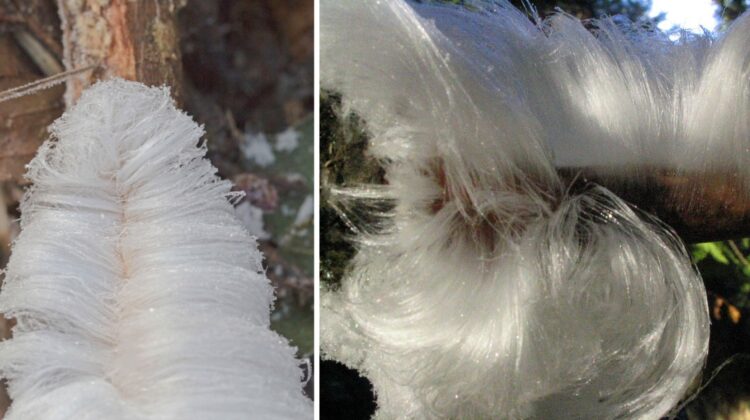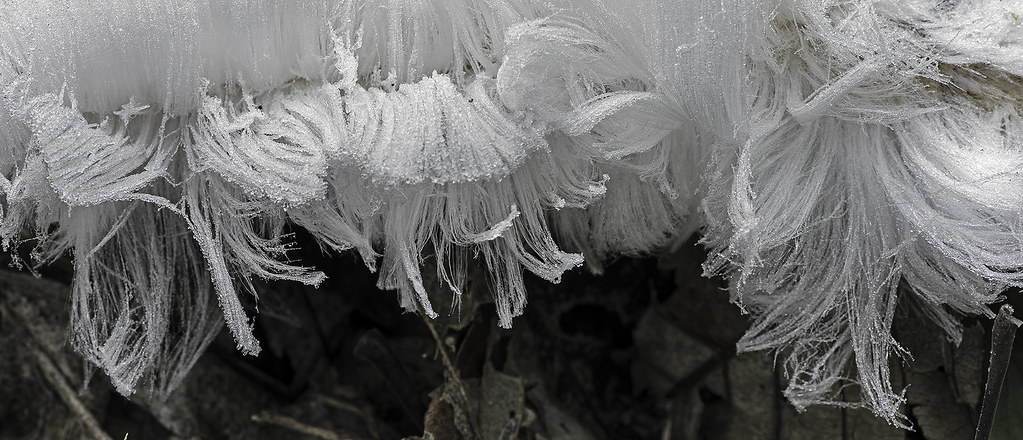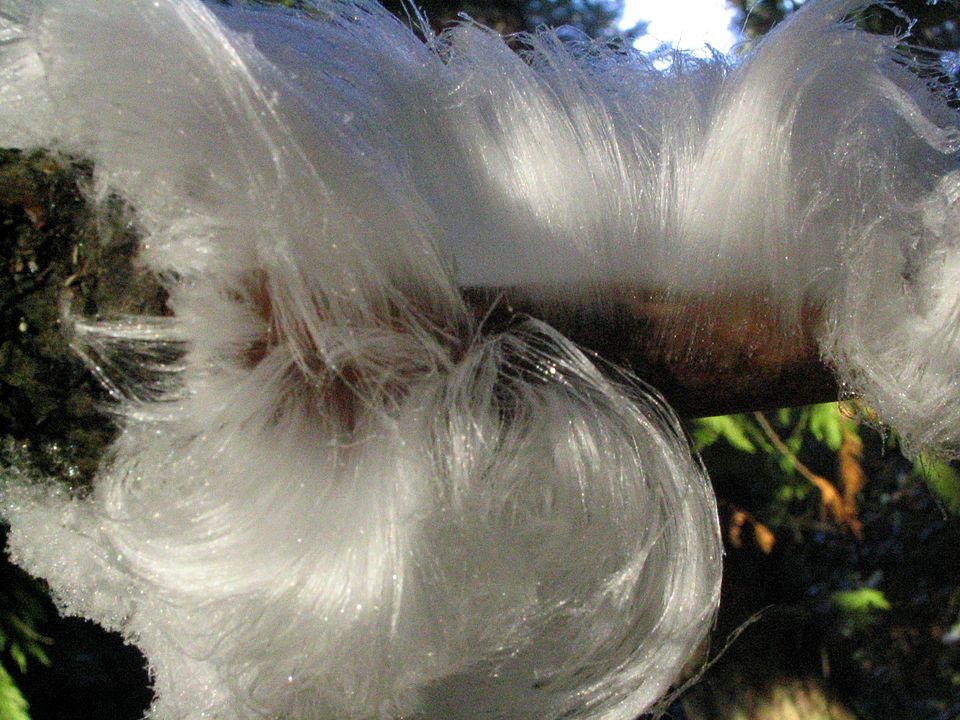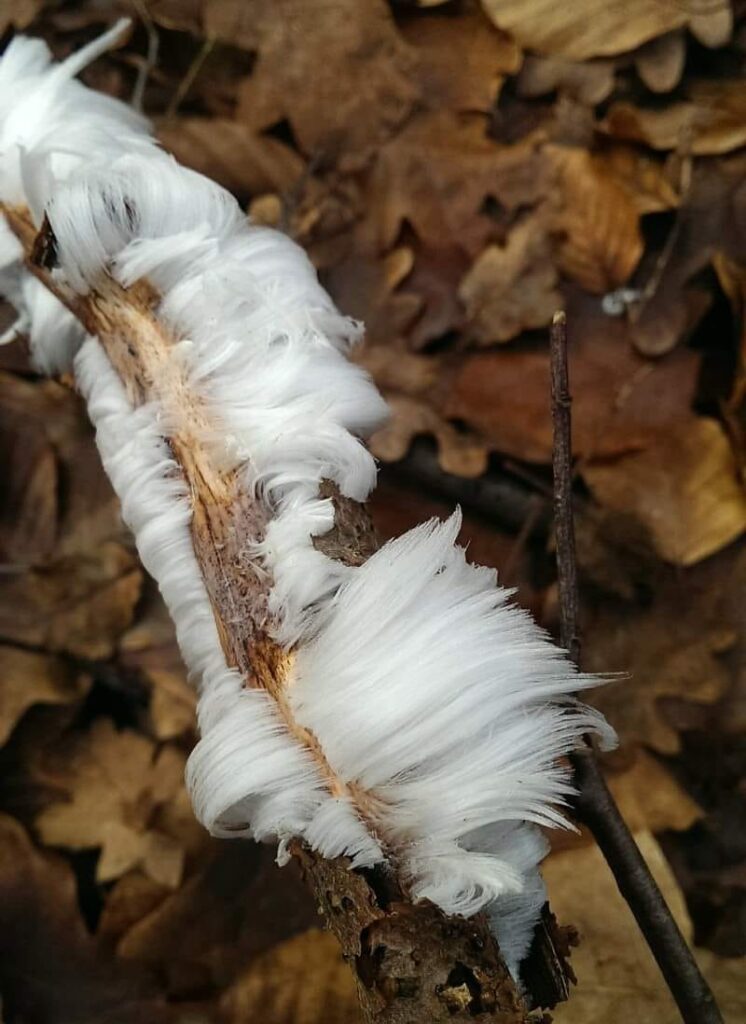
Consider strolling through the woods and coming across a white wig in the middle of the road. When you touch it, though, it becomes clear that it is not a wig. Meet the one-of-a-kind “hair ice.”

Hair ice is ice that forms on dead wood and has the appearance of fine, silky hair. This natural phenomena, sometimes known as ice wool or frost beard, is rather unusual, having been documented predominantly in broadleaf woods between 45 and 55 °N.
When temperatures are just below 0 °C (32 °F) and the air is humid, this unusual type of ice forms on moist, rotting wood from broadleaf trees. The hairs are smooth and silky, with a diameter of about 0.02 mm (0.0008 in) and a length of up to 20 cm (8 in). Individual hairs are brittle, although they frequently adopt the form of curls and waves.

Surprisingly, they may hold their shape for hours, if not days. This lengthy lifetime suggests that something stops little ice crystals from recrystallizing into larger ones, as recrystallization generally occurs relatively quickly at temperatures near 0 °C (32 °F).
Ice hairs appear to root at the mouths of wood rays (rather than on the bark), and their thickness is proportional to the diameter of the wood ray channels. A piece of wood that generates hair ice once may continue to do so for many years. But why?

In 2015, German and Swiss scientists solved the puzzle by identifying the fungus Exidiopsis effusa as the key to the development of hair ice.
The researchers discovered this specific fungus on every hair ice sample they analyzed. There was no hair ice formation when the fungus was killed with fungicide or hot water.
The fungus appears to mold the ice into fine hairs via an unknown method and likely stabilizes it via a recrystallization inhibitor similar to antifreeze proteins.




So if you ever happen to come across that odd white wig in the forest, please don’t touch it! It would be a petty if it lost all its hair…

Leave a Reply